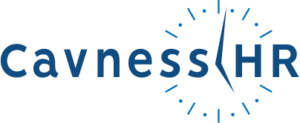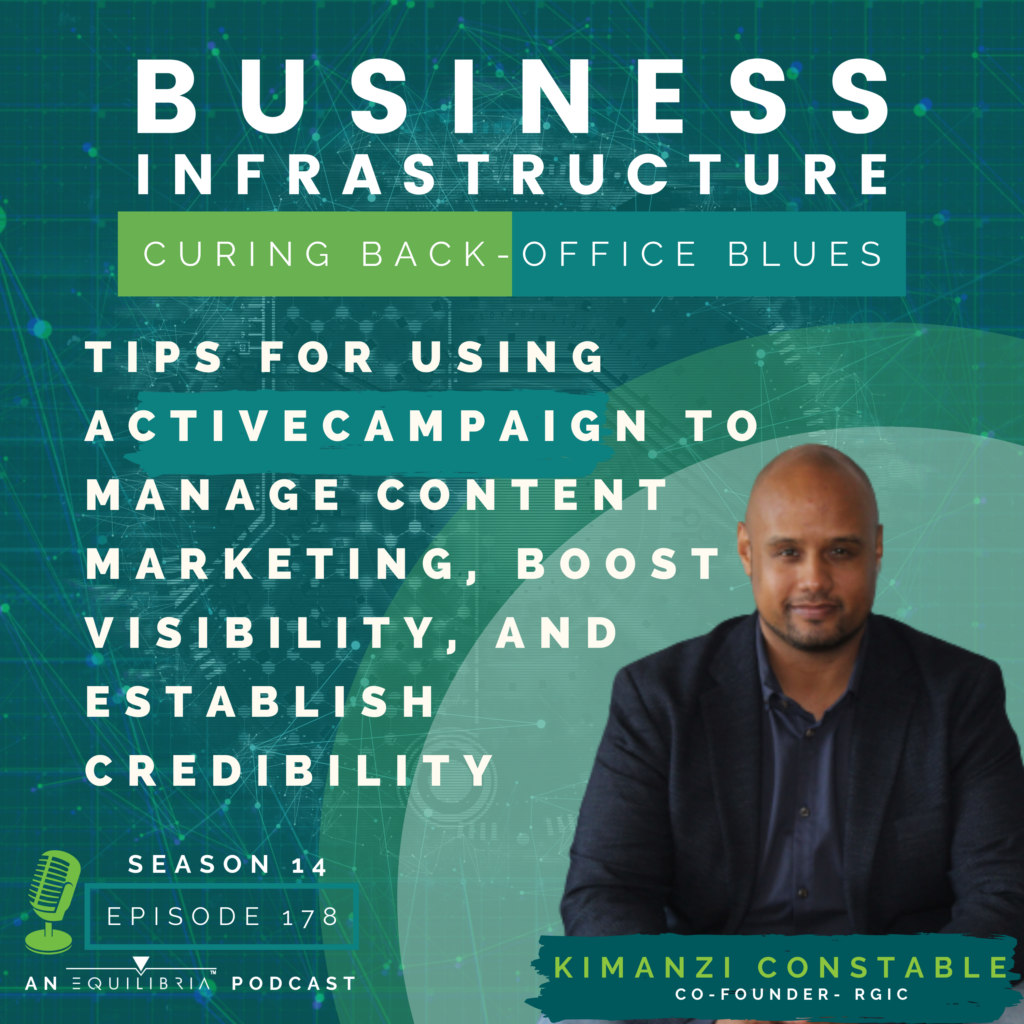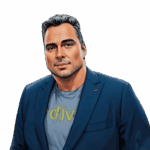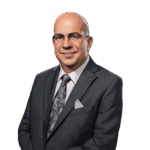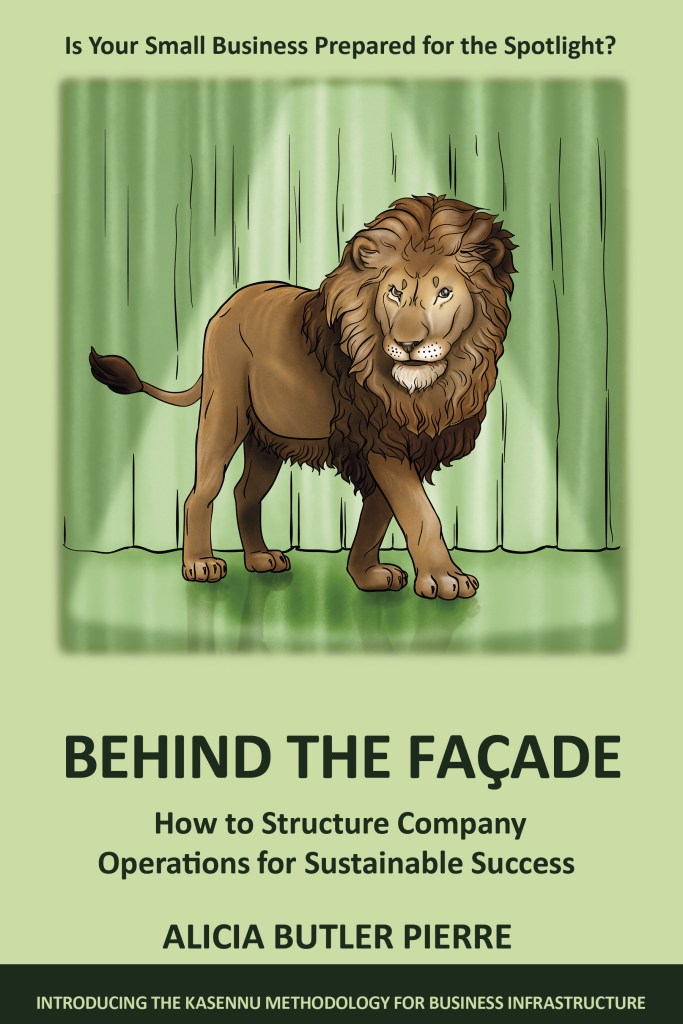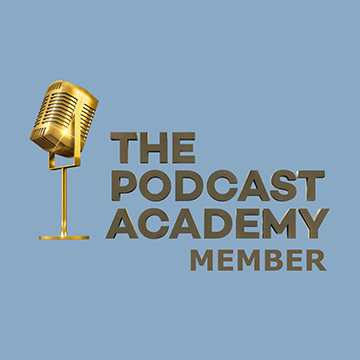Transcript
[00:00 – 01:29] I’ve said it before on this podcast, you can be the smartest person in the room with the best product or service in the world. But if no one knows it, then your business will suffer. Simply put, obscurity kills. Hi, I’m Alicia Butler Pierre. And the good news is that in this era of digitization, we have access to free or low cost technologies that really level the playing field when it comes to promoting ourselves and our businesses. We’re living in a golden age of content marketing, but what exactly is that? Why does it matter? How do you do it? You’re about to learn the answers from a content marketing expert who not only champions publicity, but also the operations and business infrastructure required to support the fast growth that can come from your newfound popularity. Even better, he’s going to share details about the technology he uses to streamline content marketing activities for himself and his clients. Gone are the days of placing ads in the phone book and doing door to door selling, with digitization content marketing is the dominant medium for exposure. So think again, before you convince yourself that this isn’t something you can or should do. After all, as the adage goes, closed mouths don’t get fed.
This is Season 14, Episode 178. Let’s start the show.
[01:30 – 01:54] Welcome to Business Infrastructure, the podcast about curing back-office blues of fast growing businesses. If you’re a business owner or operator looking for practical tips and solutions to scaling your business in a sustainable manner, you’re in the right place. Now here’s your hostess, Alicia Butler Pierre.
[01:55 – 03:33] Having a tough time, trying to explain ideas over a video conference? Try the ThinkSmart whiteboard. It’s the fastest whiteboard software in the world and allows you to upload flow charts and write on them while your colleagues are watching remotely. Call us today for a free demo. The number is 1-866-584-6804 or visit us online @getmytablet.com. Now that’s smart, ThinkSmart. This episode is brought to you by Equilibria, Incorporated, the company behind this podcast, where we design scale-ready business infrastructure for fast growing small businesses.
We are, well, into Season 14 where our focus is on game-changing technology. And joining us in Bradenton, Florida is Kimanzi Constable. Kimanzi is the co-founder of RGIC, a content marketing agency that helps entrepreneurs as well as businesses leverage large media publications to increase visibility, build brand authority and grow revenue. He’s authored four books, pinned articles for over 80 publications and magazines, and has been interviewed on over 250 podcasts. So he knows a thing or two about leveraging content marketing to connect with customers. And I’m proud to be one of those customers. So, Kimanzi, thank you so much for joining me today. I’m so happy that you could be here for this interview.
[03:33 – 03:56] Thank you so much for having me Alicia, and there’s even some new information since the last time you and I talked. We actually kind of don’t live anywhere. Oh, really. I’m coming to you live from Puerto Rico right now. Oh, nice, nice. We sold our house in Bradenton. We sold the house and we sold all our stuff and we’re full time digital nomads now.
[03:57 – 04:01] Wow. Yeah. Okay. As of, like a month or two months, or…
[04:01 – 04:13] Yeah, it’s been… Wow. We closed on the 28th. We closed on the 28th of September. So I think, technically it’s been a week, but we had sold all the stuff and had physically left the house like about a month ago.
[04:14 – 04:34] Digital nomads. And I did see that on your LinkedIn profile. And I wanted to ask you about that anyway, but you’ve already answered that question. Wow. So, are you just like living or is the plan to just kind of live in Puerto Rico for a while and then maybe try something else, another country?
[04:35 – 05:19] We always say that we’ve built a business that allows us to have freedom, meaning we don’t have to be in any one location to operate the business. And that’s one of the beautiful things about business and the time we live in. And so we’re going to slow travel, not stay here in Puerto Rico. I know a lot of people, business owners, who come here to Puerto Rico lately because of the tax benefits that businesses can receive, the reduced taxes you can receive, but we’re here because this is where my wife is from. This is where some of our family is. And so we’re connected with the heritage, but we’re going to slow travel, six weeks to three months in a location, and then we’re going to move on to a new location. So we’re, we’re headed, leaving here and then we’re going to head back to the states for holidays and then Italy at the beginning of the year.
[05:19 – 06:25] Oh wow. Very nice. I’m so envious. That’s really nice. And speaking of your wife, Cindy, Cindy Constable your better half, she is your business partner slash co-founder of RGIC. And I had the pleasure of meeting both of you at the recent 2021 Podcast Movement Conference. And Kimanzi, I’ve said it before. I’ll say it again, you and Cindy hands down had the best presentation and that’s, I know that’s my opinion, but seriously it was the best presentation. And I’m sure a lot of it had to do with the fact that it was so relevant to what I was looking for. And you all just hit, I mean, you hit all of the points, it validated a lot of things that I thought about leveraging publications to promote, not just a podcast, but your business as well. And so I’m just, I’m just really appreciative of the fact that you all gave such a meaningful and value-packed presentation.
[06:26– 06:42] I think the thing is, I’m very glad that you were there and that you got value. And I think that’s the thing that I’ve come to see in entrepreneurship is that if you do have something to say, you do have a way to help people to help clients, you can put all the information out there and people will still hire you.
[06:42 – 07:05] Yes. Yes. And before we get into more about what you and Cindy do through your content marketing agency, I was curious, who were you in your former life, Kimanzi? Before you became an entrepreneur extraordinaire, content marketing strategist. What did you do? What led up to you co-founding this company with your wife?
[07:05 – 07:58] Yeah. I started my first business at 19 years old. Oh, wow. The business actually, it was an offline business. So, where I had lived in Wisconsin, we had guys that delivered to the grocery store that were independent vendors. So the people that come to your store that deliver bread, such as Oroweat or Brownberry, or the people that you see delivering Little Debbie or Snyder’s or Hostess. Those are not actually employees of those grocery stores. They’re independent vendors, meaning they buy the franchise, they get all of the grocery stores within a certain territory. They deliver to those stores, service those stores, and they get 20% of the sales and they’re responsible for their own trucks, insurance and all that good stuff. So they’re independent contractors, my business was to actually run their vacation routes so that they could go on vacation.
[07:58 – 08:46] So these guys, since they’re independent owners, business owners, the company, the main company, your Hostess, you’re a Little Debbie, if you will, they don’t provide as somebody for them to run their routes so that they go on vacation because they’re independent and seen as though these drivers and these independent contractors invest anywhere from 200 to half a million dollars into these franchises. They’re not just going to trust anybody to run their business, right? They’re not going to let them drive their trucks and use all this equipment because this is their livelihood. So I had to work for Sara Lee Bakery, and all of the guys, these guys, would see me every day delivering for Sara Lee. And one guy, one guy said, one day, he’s like, Hey, some of us haven’t gone on vacation in 12 years, because… Wow. …we don’t have anybody that we could trust.
[08:47 – 09:42] If I could train you and you proved yourself, you would never run out of business. And at that point I never thought about entrepreneurship, but, I, the idea of freedom really appealed to me. I’m like, all right, let’s give it a shot. So I resigned from Sara Lee, he trained me and he was right. As soon as I showed up and I did his route during the training, I had a full schedule for like three years. Wow. There were guys, I was in Wisconsin, there were guys calling me from California. Like, Hey, are you going to come out here too? And I’m like, whoa, because there’s these independent vendors in every single state. So I started a vacation relief service and the beauty of the business was I used their truck, all of their equipment. I didn’t have any overhead of my own, at all. Wow. The business is so fast that I ended up, by the end of the year one, I had five employees and the business was doing half a million dollars a year.
[09:43 – 09:47] Oh my gosh, at 19 years old.
[09:48 – 10:30] At 19. And that was the business. I did that business for 12 years and while it was an amazing and profitable business, it’s still something that anybody could do to this day, it wasn’t the business that I wanted to do. And more than that, I didn’t have any mentors at the time that taught me about operations. That taught me about taxes. That taught me about all of the various things that people don’t think about when it comes to running a business, because I made all this money at the end of the year, Uncle Sam’s like, Hey, where’s my cut? And you were supposed to give me my cut quarterly and you didn’t. And because of that, I’m going to give you some penalties. So that’s the kind of stuff that nobody had taught me about. And it meant that I was always in the business and not running the business.
[10:30 – 11:23] If I knew what I know now, I would have been managing my guys and I would have had guys and girls and I would have had all these employees and I would just show up and check on my employees and make sure they were doing a good job. But because I mismanaged a business, I always had to be in the business. And it definitely wasn’t something that I love to do. And by 2012, I hadn’t been over it. I was tired of waking up at 3:00 AM every day. I was tired of not being there for my kids. And I was tired of unhealthy habits that I picked up. And it was actually in 2012 when I discovered a Smart Passive Income with Pat Flynn’s podcast, because I had all this time on trucks. And when he started talking about the laptop lifestyle and building a business where you can generate revenue, just from your knowledge and experience, that was what, like, lit a light bulb for me. And I knew that somehow I had to transition into that kind of a business.
[11:24 – 11:36] Wow. What a story and who would have ever thought? Knowing what you do now, I would have never guessed that you had a vacation relief service and that, and it’s such a genius idea.
[11:36 – 12:24] Yeah. I wrote an article about this for Entrepreneur. I wrote, actually, a couple of articles and it was, A six-figure business you could start for under a hundred dollars. And it probably still to this day is one of my most viral articles because I have gotten messages from no less than maybe 500 people all across the country that went and started the same kind of business where they live. Because there are no overheads to start. The only overhead you have to start, as you have to go into one of those warehouses where the Pepperidge Farm guys or the Brownberry guys. The independent vendors say, Hey, this is who I am, this is how much I charge. I’d like to, you know, run your route for vacation. And people start signing up because those guys don’t have anybody to, to run their routes, to go on vacation. It’s easy business.
[12:24 – 12:34] Well, now in that article, did you talk about the importance of knowing about operations and the legal and tax implications? Did you happen to mention that also?
[12:34 – 12:46] Oh yeah, I have an article. Yeah. The follow up to the first one, I definitely did. I’m like, look, this is easy to start, but you have to understand that there is, if you’re not an entrepreneur, there’s things that you definitely have to know about professionals that you definitely have to hire.
[12:47 – 12:53] Awesome. Awesome. That’s good that you paid it forward, you paid it back and you paid it forward. Really, you know.
[12:56 – 12:59] And in 2012, I sold the business to what was, a good friend at the time. And he still operates that business today.
[13:00 -13:10] Wow. Okay. So you have this vacation relief service you started at 19 years old, 12 years later, you sell the business. What came next?
[13:11 – 14:00] When I sold the business I had, by that point, I had found out about this whole world of making money on the internet and a more specifically, not necessarily making money in the internet, but just generate a revenue from your knowledge and experience through courses and coaching and books and digital information products. And so what I did at the beginning of 2012 was I self-published a book and it did not sell any copies at all. I thought that if I just put this thing on Amazon, people are going to find it and they would buy it. And it didn’t happen that way, but that triggered in my mind. Well, you weren’t able to do this. You have to figure out the reason why and figuring out the reason why it made me realize something fundamentally important is if you have no visibility, you have no sales and no growth.
[14:01 – 14:52] And so I spent a majority of my time then on visibility strategies, such as guest posting for blogs, because that was a big thing back in 2012. Guest posting for blogs, getting interviewed on some podcast, sharing my story and then showing up in various Facebook groups and even offline meetups and situations like that and showing my expertise and those circumstances, at once, people did see the expertise they wanted to come back and they wanted to check out my website, my platforms, my books. And so by the time I had sold that business, I had gotten my online business, if you will, to the point where I was generating $5,000 a month, mainly through consulting and through speaking. And so by that point, once it got to 5,000 a month, I felt good that I could quit and that I could just focus all of my efforts on this and that I could scale this business.
[14:53 – 15:52] So come 2013. That’s exactly what I did. I was living this life. I had a quote unquote internet business, and it had a solid customer base, but I went even farther in the audience building efforts. And so I was a guest in that, in that year 2013, on 80 different podcasts, I had 60 different guest blogs published, and I started to get into my first few publications, larger publications, which were Entrepreneur on the Huffington Post back in the day when Arriana Huffington used to own it. And those two things alone, just getting into entrepreneur.com as a contributor, becoming one of their first like 50 contributors and then getting into Huffington post. It even separated my business even more than everybody else that was doing what I was doing because I had this piece of brand credibility that nobody, nobody in my industry had. And that’s what really picked the business from 5,000 to a multiple six-figure business.
[15:53– 17:07] That’s amazing. And that’s why I appreciate what you and Cindy do so much, Kimanzi, because whenever people ask me, well, what’s the number one threat to your business? People always think in terms of competition, right? But I often say obscurity. Exactly. Obscurity is, can be, will be the death of me and this business. So you have to get out there and you have to be out there frequently. And part of the beauty of what really attracted me to the services that you all provide, you know, around content marketing. Sure. I could put up an ad, let’s say for this podcast, I can put up an ad, but it won’t be nearly as effective. And it’s kind of like a shot in the dark or a throwing a spaghetti at the wall kind of approach. But if I actually write an article that I can contribute to a high profile publication or a well-known, well-respected online publication, that article might be filled with all kinds of keywords that I can’t just stuff into the title of a podcast episode or the title of, well, let’s just stick to podcasts.
[17:08 – 17: 40] But if I write that article, it gives me the benefit of having all of this keyword rich content that the search engines can then scan. And as you’ve taught me, you embed or mention links to a podcast episode, and that’s how you can promote your podcast. Exactly. And it’s forever, unless, unless, you know, unless a publication removes an article, which is very unlikely, but yes, once it’s up there, it’s up there forever.
[17:40 – 18:40] That’s exactly it. Somebody said it’s not the best product or service that wins, it’s the best seen product or service that wins. And that’s great because it means we have the opportunity to create more visibility and be seen, but it also is not great in the fact that a lot of the best seen stuff tends to be the stuff that’s, like, really scammy. And somebody listening to this has no doubt seen that in their feed. Yes. On social media, right? But the beauty of large publications, as you mentioned, is it does have legs. You can post on Facebook or Instagram or some social media network and the legs are going to be very limited, right? They’re going to be limited as much as people’s attention span and as much as the algorithm will let you reach people. Whereas, on a large publication, all of their readers can see your articles, people that are searching for topics in Google can find those articles because they are indexed. And so I liked that there’s legs and more opportunities for visibility.
[18:41 – 18:58] And, speaking of, the content marketing. So obviously, eventually you and your wife, Cindy decided to start “Results Global Impact Consulting, also known as RGIC. When exactly did you all start your consultancy?
[18:58 – 20:06] Yeah, that started at around 2015ish. We had been in some publications and getting visibility that way. And we had taken the path of selling courses and coaching and, and a lot of B2C stuff. And that space just felt incredibly crowded, it felt like everybody was pretty much doing the same things. And we saw this opportunity that if we can help individuals understand content marketing and the power of content, why can’t we help larger corporations? And so 2015, the focus really shifted to, instead of working with individuals to work with corporations and that journey from 2015 to 2019 took us to 81 countries to consult for companies like Morgan Stanley and Unilever, Johnson & Johnson, and some of the biggest companies in the world on this idea of content, inclusive content and using your content to connect in a deeper way than your consumers. And it was, it was, it was an amazing ride to jump into the world of B2B. And that’s really where the agency was born.
[20:06 – 20:20] Got it, got it. But you do still work with people like me, right? The entrepreneurs and founders that are out there that have done some things out there. Right. And are looking to take the visibility to the next level.
[20:21 – 21:29] Well, once the global pandemic hit and the way that our lives changed and even the way that our businesses changed and a lot of the corporate training moved to Zoom, I mean, everybody moved to Zoom. Right. Like fatigue is a thing, but it was at that point that we realized that without the travel component, we really did not enjoy the corporate training, hopping on Zoom, training a bunch of people there was just not for us. And that’s why at the beginning of 2021, we decided to shift back and really focus on: how do we want to show up and what elements do we really like and don’t like in our business. And writing is my first love, so I wanted to lean back into writing for even more publications. Cindy still likes training, so she still does that. And then this idea of continuity. So we created a membership program where people could learn all that we teach and we could pour all of our knowledge and collective experience from 10 years into one place. And that place, you know, generates recurring revenue every month. And so that’s how the focus shifted this year.
[21:30 – 22:07] Got it. Now I know there are a number of technologies. I know this from being one of your clients, that there are a number of technologies that you introduced to your clients, but you mentioned Facebook, you know, as of this recording, October 4th, 2021, Facebook is actually down. Facebook, Instagram, and WhatsApp, but I’m hoping we can somehow figure out a way to tie that into the conversation around a technology that you think is just a game-changer, not only for RGIC, but for your clients as well. And that’s ActiveCampaign. Can you explain to us what exactly is ActiveCampaign?
[22:07 – 23:08] ActiveCampaign is an email marketing software that allows you to communicate with your customers in your email list, but also set up behavioral based automation campaigns. And so Facebook, WhatsApp, Instagram, being down right now, I mean, we’re recording this at like six at night. They’ve been down since 11:30 AM and this is across their entire networks. And I even read that their employees, Facebook employees, Instagram employees, they can’t even access, like, anything within their campus, that’s how, why this outages. But for entrepreneurs, there’s more than a few entrepreneurs that Alicia and I know that depend on these platforms to generate revenue and to get clients. And even those people that depend on Facebook ads, which is a huge way that people get clients, is Facebook ads. People used to say that with Facebook ads, you could print money. I don’t know if that’s the case, but you’re not printing money when the whole network is down, right?
[23:08 – 24:18] Like, so email marketing has gotten up, kind of a bad rap over the last few years, but it’s still one of the most effective ways to reach people because somebody who’s on social media, they might be interested in what your business does or they might not. But somebody who opts into your email list has said, yes, I give you permission to let me know what’s going on with you and your business. And Seth Godin calls it permission based marketing and that’s what email is. And ActiveCampaign, it’s a software that will allow you to set up those campaigns, but more specifically it’s behavioral based, meaning or depending on what the consumer does, you can then send them a series of responses based off of what that consumer does. And I like it as far as I’ve tried them all, AWeber, I’ve tried Convertkit, Constant Contact, even FusionAuth. What I like about ActiveCampaign is that it’s simple and effective. Like for me, I don’t know if I would say I’m techie or non-techie. I’m probably somewhere in the middle. I like things that are easy to use and that are user-friendly and that’s what ActiveCampaign is.
[24:18 – 24:31] Got it. And from what I’ve been told about ActiveCampaign is that it allows for a greater degree of segmentation of your contacts. Exactly. That might not have, in some of those other platforms that you mentioned.
[24:32 – 24:32] Exactly.
[24:33 – 25:40] Yeah. You know, Kimanzi, I was, I was looking over your LinkedIn profile and I read something that, it just made me smile. I had a big cheesy Kool-Aid grin on my face. And I’d like to read that quote, “At RGIC, we don’t look at content marketing as merely a sales component. To us, It’s all about your systems and processes pointing in the right direction”. And that definitely got my attention because as you know, that’s what I’m all about. That’s what we talk about a lot on this podcast, are systems and processes, but specifically business infrastructure. And when we come back from a quick break, I’d like to explore some of these systems and processes, if you will, around that, you and Cindy would recommend, around the use of ActiveCampaign. Not only as you’re working with your clients, but what you would recommend your clients to do as well in terms of building up their audiences and making sure they stay in frequent communication with their audience. So let’s go ahead and take a quick break. And when we come back, we’ll take a deep dive into those areas.
[25:43 – 27:03] Did you know that small business owners spend 25% of their time on HR related items? This time is better spent taking care of employees, customers, and building your business. CavnessHR delivers HR solutions to companies with 49 or fewer employees through their HR platform. Specifically, they provide you access to a dedicated HR business partner. This is important because every year small businesses lose a collective 27 billion US dollars or roughly $10,000 per employee. Their platform can revolutionize your HR operations. And you’re in luck because as a listener of the Business Infrastructure Podcast, Cavness HR is offering you an opportunity to be a part of their beta testing. Just click the CavnessHR link in this episode’s description, or go directly to CavnessHR.co to sign up. As a bonus, you’ll also receive three months of free HR services. Take it from me. I had to learn the hard and costly way. It’s better to spend your time working on your business than in it. Visit CavnessHR.co to sign up today.
[27:03 – 28:07] Okay. We are back everyone from the break. Kimanzi had me laughing there. So we were starting to talk about ActiveCampaign, and I’ve definitely heard about it before. And now you have me even more curious to go and learn more about it, but you were talking about how simple and effective it is. And one of its most powerful attributes or features being this, this segmentation feature that it has. Now, considering your appreciation for systems and processes, I was wondering if we could continue our discussion from a business infrastructure perspective. And for those of you listening to the show for the first time, business infrastructure is a system for linking your people, your processes, and your tools and technologies to ensure that growth happens in a profitable and sustainable way. So if we could focus on your process piece first, how do you actually work ActiveCampaign into the conversation with your clients, or would you rather talk about how you all use it in the back-end?
[28:07 – 28:57] We can talk about how we use it and then we can talk about how we tell clients about it. Sure. We use it probably in a few different ways. One of the main ways is, we’ve built some great email lists like as you have mentioned, they are segmented based-off of how we interact with the people, like, for example, when we spoke at Podcast Movement and we offered a free download, we had people sign up and that was a separate email list specifically for Podcast Movement . So that when we go to speak at an event or do a virtual summit or a podcast interview or whatever, and we have people sign up, then we can tell the effectiveness of our outward visibility efforts. So if we’ve got a Podcast Movement, speak there and it does nothing for our business, then Hey, that’s something that we would reconsider next year. Like, Hey, is this even worth it in our business?
[28:57 – 29:51] So we use it with the segmented list. We actually use it to, ActiveCampaign has a great tagging system, meaning you can tag people based-off of how they came into your world. And one of the ways that we use it is with our membership software. I had mentioned that we had a membership program and the software that we use for the membership program is called AccessAlly, and it’s a program that connects directly to WordPress. For us, we’ve tried, you know, Kajabi and some of these other platforms for membership. But at the end of the day, we love that everything is housed in WordPress, because that ends up being the most reliable source, especially when it comes to different web things. And so, AccessAlly connects to WordPress and then the way that somebody knows what they have access to in the membership, because there’s various levels, is what the tagging that’s in ActiveCampaign.
[29:52 – 30:40] So they’re tagged in ActiveCampaign under a certain way, and that’s going to control what access they have in the membership. And it all happens automatically, which is a beautiful thing. So we use it for a membership. We use it for sales conversations. Inside ActiveCampaign, they have a tab called deals, and this is kind of like their pipeline software. So like, if those of you that are in sales, you may have used something like a pipe drive where you’re tracking your sales conversations and leads and what kind of business you have in the pipeline. Deals inside ActiveCampaign, does the same thing. So if I was having a sales email exchange with Alicia through email, through Gmail, it would be, and since I have that connected to my ActiveCampaign, I would see all of the correspondence that I had with Alicia right there under deals.
[30:40 – 31:11] Yes, I talked to her on the 25th and she mentioned that she needed two more weeks and then she would be in a position to start thinking about moving forward. Then it’s going to send me an email reminder, like, Hey, Alicia said on the 25th, she’d be ready to move forward. You should then follow up with her. And it has all of that in there under deals. It has what business you have in the pipeline, what dollar amount, what business you’re trying to get. And it works exactly like a pipe drive, yeah, that’s in ActiveCampaign. I know, I was surprised too.
[31:11 – 31:20] Okay, so, can I ask a quick question? Yes, yes. So it almost sounds like it has part of a CRM component. Well, it is a…
[31:20 – 31:52] Well, there, there is a CRM. That’s exactly where I was going next. It does have a CRM component in there as well. So it has deals, it has the regular email segmentation, and then it does have the CRM component. Now, is it as good as something like an Asana or something like that? No, absolutely not. But if you want it to use an all in one that was simple and that if you had a smaller team, absolutely. You could use deals. You could use the CRM and you can use the email automation and it would all be in one place.
[31:52 – 32:15] Okay. And so with the email automation, if I understand you correctly, it connects with, if you have a Gmail, if you use Gmail, for example, for email or outlook, I know those are usually the two main email platforms that a lot of these technologies can integrate with. So do you connect your Gmail or Outlook account with… Yes, you do. ActiveCampaign?
[32:16 – 32:27] When I say Gmail, I mean, workplace by Google, like… Right, right. Exactly. Like the main, I don’t mean, yeah. Yeah. Yes. And you can connect that. Yes. And then it’s all tracked and kept under one place.
[32:28 – 32:41] Oh, so that’s kind of like how Salesforce works, for example, where it’s tracking every single communication. You don’t have to guess. Well, when was the last time I talked to Kimanzi and Cindy? It’s all there.
[32:42– 32:42] It’s all there.
[32:42 – 32:46] Oh, I didn’t know it had that feature.
[32:46 – 32:47] Most people do not.
[32:49– 32:51] And what are we talking about cost-wise?
[32:51 – 33:29] Well, you’re going to pay based-off of how many people are, like, a range of people that are on your list. But what I will tell you is that we did, because we, as you said, we worked with a lot of small to midsize businesses and even individual businesses. And we would recommend the software so much. We actually got a merchant account to where people would sign up under our merchant account. And then we would generate revenue, additionally, that way. And then, the customers that we worked with and we set up on the software, they had of course full control and full access. But if they needed us to create things, we could also go in there and create things for them as well.
[33:31 – 33:32] Very nice.
[33:32 – 33:40] I would say, I don’t know what the tier breakdowns are. Exactly, but they’re very competitive with any of these other software.
[33:40 – 34:26] That’s what it sounds like I would imagine they would be, but we’ll, we’ll make sure we have a link to ActiveCampaign on the website. That’s really cool. So when you’re recommending it for your clients, let’s say you have a client that, like myself, actually. So you, you all have been coaching me through the process of contributing articles and, and there’s a tier system. You know, you, you take baby steps, you crawl before you walk. So before you can get into the Harvard Business Review, there’s some other, there’s some other lower tier publications that you should, should contribute articles to first. And so that’s where we are in our work together. And at what point Kimanzi would you start to have this conversation with me about ActiveCampaign?
[34:26 – 35:20] Especially if you’re going to go the route after publications, we would have this conversation early on, because when it comes to being on a publication, for example, or getting on a podcast or using social media marketing, your goal is to be building your email list or lists with an “s”, because those are assets that are yours. Those are assets that you own. Those are assets that even count If you want to sell your company one day, like you, Alicia would know about this more than I would, but like, even if you wanted to sell your company one day and you had a series of email lists, that’s an asset, that’s valuable. So the point of being on all of these other mediums, isn’t just the SEO, or isn’t just the visibility, it’s to direct people back to your list so that you have the ability to communicate with them outside of the place where they found you.
[35:20 – 35:51] And so… Yes. …this will be a conversation to have early on, where it’s like, Hey, ActiveCampaign is great. But no matter what software you use, you need to have something set up to where there’s opt-in on your website, somebody opt-in, they can get on the list when they’re on that list, you should have autoresponders set up. So at least a four-part auto responder series that introduces new prospects to you, who you are, what you do, gives them a little bit more information and adds some value to them. And at the very least you need those things set up.
[35:52 – 35:56] So that you aren’t dependent on Facebook or Instagram.
[35:56 – 36:14] Yeah. Or you aren’t dependent on it in this day and age, we’re talking to 2021. There are still people that will get people on it. They’ll put them on out like Google sheets or something like that. And they manually email people individually. I promise you there’s people that still do that. And it just baffles my mind.
[36:15 – 36:19] Oh Wow. Wow. Maybe they don’t know any better?
[36:20 – 36:31] Maybe, or maybe the tech is just like, you know, the idea of the tech. And tech can be something that, like, overwhelms people. Yeah, that’s true. Like they look at it and set it up and it really overwhelms a lot of people.
[36:31 – 37:18] That is true. So, you know, that’s, that’s actually a great segue to another question that I want to ask you. And that is in terms of people, that people component of business infrastructure, I’m sure there is, there’s someone listening right now thinking, oh my God, I have to do all of this by myself? There’s no way. So who are some of the key people that you would recommend that people have around them or on their team or, or at least be able to tap into on an as needed basis to help them out with, not only with setting up something like an ActiveCampaign, but also just in working with, with you and Cindy and, and executing some of the different strategies that you teach them regarding, you know, leveraging content marketing?
[37:19– 38:18] So I could tell you how we do this. And something that you might want to think about is, if you’re the type of person that you think of creating content, writing articles, creating social media posts, you think of all of that as work, and trust me, there are people that think of that as work. You definitely should have somebody that’s going to help you out with content, whether that’s a content agency, whether that is somebody individually, that you bring on on a contract basis to help you create content, content is how you show your expertise. It’s how you build your audience. It’s how you stand out from everybody else screaming they’re an expert. So you need content first and foremost. So you need somebody that’s going to handle content. Then you need somebody that handles operations. So that could be a high level person that is more of the strategist and teaching you what you need to put in place operationally, or that could be the tactician that is going to help you put those things in place, or it could be both.
[38:19 – 39:48] But a lot of the reasons why businesses don’t scale is because their operations are shoddy. A lot of people think that, oh, if I just had more clients, my business would explode and I’d get to seven figures or, or whatever metric you’re using. And the reality is if you did get those extra clients and your systems aren’t set up, it would destroy your business. We see this happen all the time. Yes. Like with the quote unquote Oprah effect. Yes. People were on Oprah. Yes. She shouts them out. They didn’t have the systems in place and the weight of all that new business crushed them. That’s true. That’s true. So you definitely need an operations person. And then you also need somebody that can handle the tech side of things. So if you’re not techie yourself, or you just are not going to have time, because you want to be the CEO of your business, you’re going to need somebody that does understand the tech, that does understand how to set up these sequences that does understand websites and WordPress and Kajabi and all of these various software because a lot of business today, there’s a lot of tech involved in that business. And if you don’t get it, get it, or don’t have time. You should have somebody to do it. The only caveat I would give you is you should at least know what’s going on. I can’t tell you how many clients we’ve worked with, that they have no clue even where to log in to ActiveCampaign or to anything, anything that they use in their business, because somebody else has been doing it. And those people end up in hard situations sometimes.
[39:48 – 40:52] Yeah. Especially if that person leaves or, you know, has to go away or I mean, anything can happen. So I agree with you actually, that it’s always good to at least have working knowledge. You don’t have to have the deep level expertise, but at least have, you know, basic, fundamental working knowledge of how these different technologies work. And I mean, of course, how to login to them. He definitely needs to know that. Everyone, if you’re listening right now, the conversation we’re having right now pales in comparison to what it’s like to be in an actual coaching conversation with Kimanzi. I mean, I can personally vouch for RGIC, when you have a coaching consultation with them, get ready because it is information-packed. Oh my gosh, I’m still trying to digest everything you taught me from our first coaching conversation. I’ve even had my assistant listen in.
[40:52 – 41:58] And I was like, Erika, take notes. So we’ve actually been, we’ve literally taken notes and we’ve compared our notes against each other. And from there, we were able to develop a plan. You mentioned Asana, we actually took a lot of the things that you mentioned in that coaching call that I had with you. And we converted some of those things into tasks that we’re now tracking in Asana, so I just wanted to let you know that it was such a… Hey, look at that, (inaudible) been done. Yes, we’re, we’re getting it done, Kimanzi. Good, great things are happening. And you know, I, I want to ask you, and I don’t mind sharing this publicly, but so I did contribute an article to HubSpot, as you know, I think that was like on August 31st, that was the first article I submitted to them. And I had a conversation with someone there not even a week later. And she logged into the, we were on a zoom call. She shared a screen with me. She showed me the backend of their site. And she said, okay, Alicia is so far, this has, your article has 10,000 views. And I hadn’t even promoted it yet at that point. Is that good? Is that a good number starting out?
[41:58 – 42:02] That’s a really good number. Wow. Oh. Wow, look at you.
[42:03 – 42:52] Hey, you’re a great teacher. Yeah. So that’s another plug for you and RGIC. Look at that, wow. Yeah. And I’m pretty sure, you know what, I’ll actually send you a screenshot too, and I’m more than happy to give a testimonial. So just let me know. So, in terms of additional resources, you’ve already said some amazing things about ActiveCampaign. We’re definitely going to make sure that we link to it, but there’s some other things that you mentioned as well. You mentioned the Smart Passive Income Podcast by Pat Flynn, and we’ll make sure we link to that as well. I’m curious, what is the name of that Entrepreneur article that you wrote all those years ago about your experiences with your vacation relief service? Do you remember?
[42:52 – 42:59] Yeah, it’s, it’s “A six figure business you can start for under a hundred dollars”.
[43:00 – 43:18] Okay, ‘cause I’d love to link to that as well. Now I know that. So when, when you go to your website, which is rgic.com or no, I’m sorry. It’s R G I C, and there’s another letter, right? R G
[43:18 – 43:19] rgicai.com.
[43:19 – 43:33] Okay. rgicai.com. And when you go there, you can actually sign up for these different templates. Can you talk a little bit more about the different types of templates that people can have access to?
[43:34 – 43:56] Yeah. We have templates that are all teaching people all about large publications, how they could use those to help their business. And then we actually have a pitch template in there for somebody that’s like, yes, I’m convinced of this, but I’m not sure how to reach out to these publications. We actually have a template, some templates in there for people that walk them through how to do that, all that.
[43:58 – 44:14] And there’s also the presentation that you and Cindy actually gave at the 2021 Podcast Movement Conference. Is that link still active? Yeah, yeah. It’s still active. Because I’d love to put that in the show notes as well? What, what was the, the URL for that again?
[44:14 – 44:18] It was pm21guide.com
[44:18 – 44:32] pm21guide.com. Okay. And one more question you also mentioned, well, two, actually you mentioned your membership program. Can you talk a little bit more about that as well?
[44:33 – 45:11] Yeah. We have a membership program called Published and Paid, you can find it at publishedandpaid.net. And that is a program for those that do want to learn. How do you get into these publications, how to get your content published there, the better part of this, how do you use those to build your business? So we cover systems, woohoo, because a lot of people are just chasing logos. They either want to be in Forbes and Entrepreneur and anxious to get the logo, but they have no clue once you actually get in there, how do you use it to build your business? And so this program, it goes into depth of not only, how do you do it, but then how do you actually use it to generate real revenue for your business.
[45:12 – 46:07] So, right. Listening, going back to that coaching call that I had with you, and I love the fact that you re you all record everything and so that your clients can actually have access to those recordings and go back and listen to it and try to digest everything, make sure they don’t miss anything, but you’re so right having those tasks and then coming up with the system. So for us, our system looks like putting those tasks into Asana, tracking everything, and then linking all of those activities. They’re not just mindless activities that we’re doing, you know, just to check off of a checklist, it’s actually working toward this overall strategy for increasing our visibility. So that’s, that’s the whole point of all of this. That’s it. Yeah. Yeah. One more thing you did mention Seth Godin. Is there a particular book that you liked? I know he has several, but I’m wondering if there is a particular book that you highly recommend from Seth?
[46:08 – 46:26] Probably, The Dip is my favorite out of all his books. The Dip. Because that book is a little bit of a tactical book, but also it’s an inspirational book to kind of get back up and to keep going. I mean, but like you said, I’ve, I’ve read all his books. They’re all good. He has a very unique style. Yeah. But that’s probably my favorite.
[46:27 – 46:33] Yeah. Okay. We’ll definitely make sure we link to that as well. What’s the best way for people to get in touch with you, Kimanzi?
[46:33 – 46:56] Yeah, the best way is to go to rgicai.com. That’s a site that we’ve mentioned and you’ll be able to see those guys, but you’ll see all our social media links. And more specifically, you’ve been able to go to our blog and see a lot of free, great blog posts that kind of walk you through everything we’ve talked about here and finding these publications and what you need to know and publications that pay and so much more.
[46:57– 47:54] So I’d like to just quickly recap some of the things that you shared with us. I mean, there’s, there’s been so many great nuggets of information that you’ve shared. I really appreciate hearing that backstory of how you went from being a 19-year old, having this six-figure business within your first year of operation, operating a vacation relief service and how ultimately that led you to writing or self-publishing your first book. And then you realize, okay, nobody really bought this, why? And that’s what kind of led you down this path of increasing visibility and then exploring through Pat Flynn’s podcast, Smart Passive Income. This idea of being able to become a digital nomad and, and just traveling around the world with your laptop, but still being able to make a very, very good living while doing so. You talk to us about ActiveCampaign.
[47:54 – 48:52] I’m definitely going to go and check more, checkout ActiveCampaign. Just some of the things that you mentioned, some key features, the segmentation piece, the tagging, it enables you to really track the effectiveness in different campaigns and events and conferences that you may attend. But probably most impressively, which I didn’t realize is the deals feature where you can track these sales conversations and just communications in general with different people. So I’m imagining, like, a very simplified workflow, if you will, Kimanzi, that you’re able to track within ActiveCampaign. So that alone is definitely worth looking into just, just to be able to have a lower cost way of having that sales tracking. And you also said something else that I thought was really brilliant: Content is how you showcase your expertise. And a lot of businesses don’t scale because their operations are shoddy.
[48:53 – 50:02] I’m thinking of a conversation I had a few weeks ago with a friend, I was telling him about a TEDx talk again, wasn’t able to, they weren’t able to pull it off because of COVID, but he said, well, why are you doing that anyway, Alicia? and I said, well, are you serious? Are you really asking me that question? Like, do you know what a TEDx talk can do for your visibility? Like he really didn’t get it and he’s a fellow entrepreneur. So it just, it blew my mind that he didn’t make that connection. So, you know, but I think perhaps the best way to wrap this up is a quote that I saw from your website. It’s not the best business that wins, it’s the best seen business that creates growth. You can have the best product. You can be the most intelligent, smartest person in the room, but if nobody knows it, you just won’t be able to take your personal brand or your company to that next level. Kimanzi, it was such a pleasure learning more about ActiveCampaign, learning more about your background and just all the amazing things that you and Cindy have going on at RGIC. Thank you so much for coming onto the show. I really appreciate it.
[50:03 – 50:06] Thank you so much for having me and I hope people got value.
[50:07 – 50:51] Oh, I, they definitely will. No doubt about that. And to make sure they get the value, we’re going to make sure that links to all of the resources that Kimanzi shared with us are going to be available at businessinfrastructure.TV. Just look for it in the show notes, again, that’s businessinfrastructure.TV. You’ll also find more information about our sponsors, make sure you support them because when you do that helps us keep this show free for you. Thank you so much for tuning in and for being a loyal subscriber. Remember, stay focused. Be encouraged. This entrepreneurial journey is a marathon and not a sprint. And keep operating as good on the inside as you look on the outside. Until the next time.

